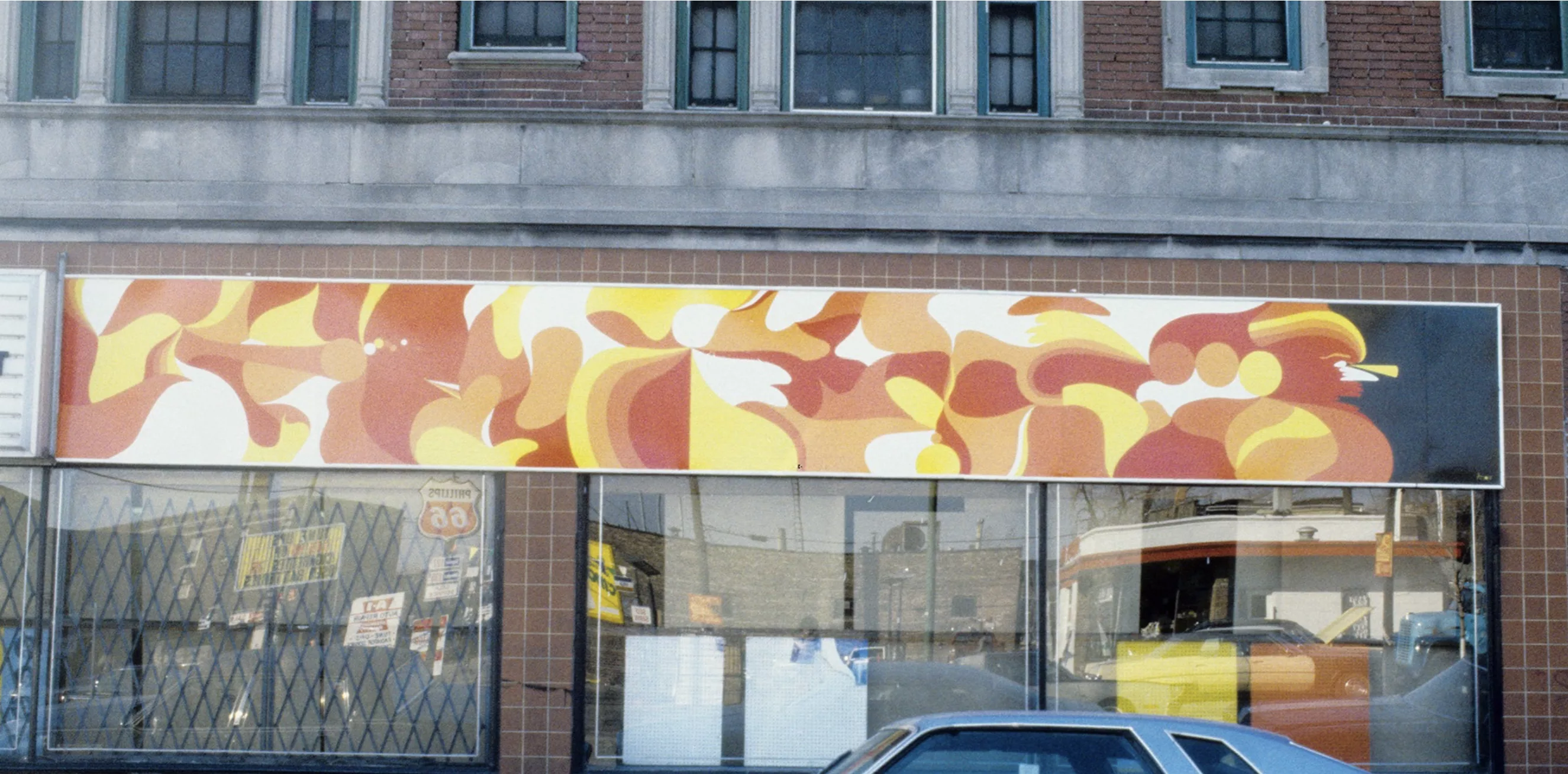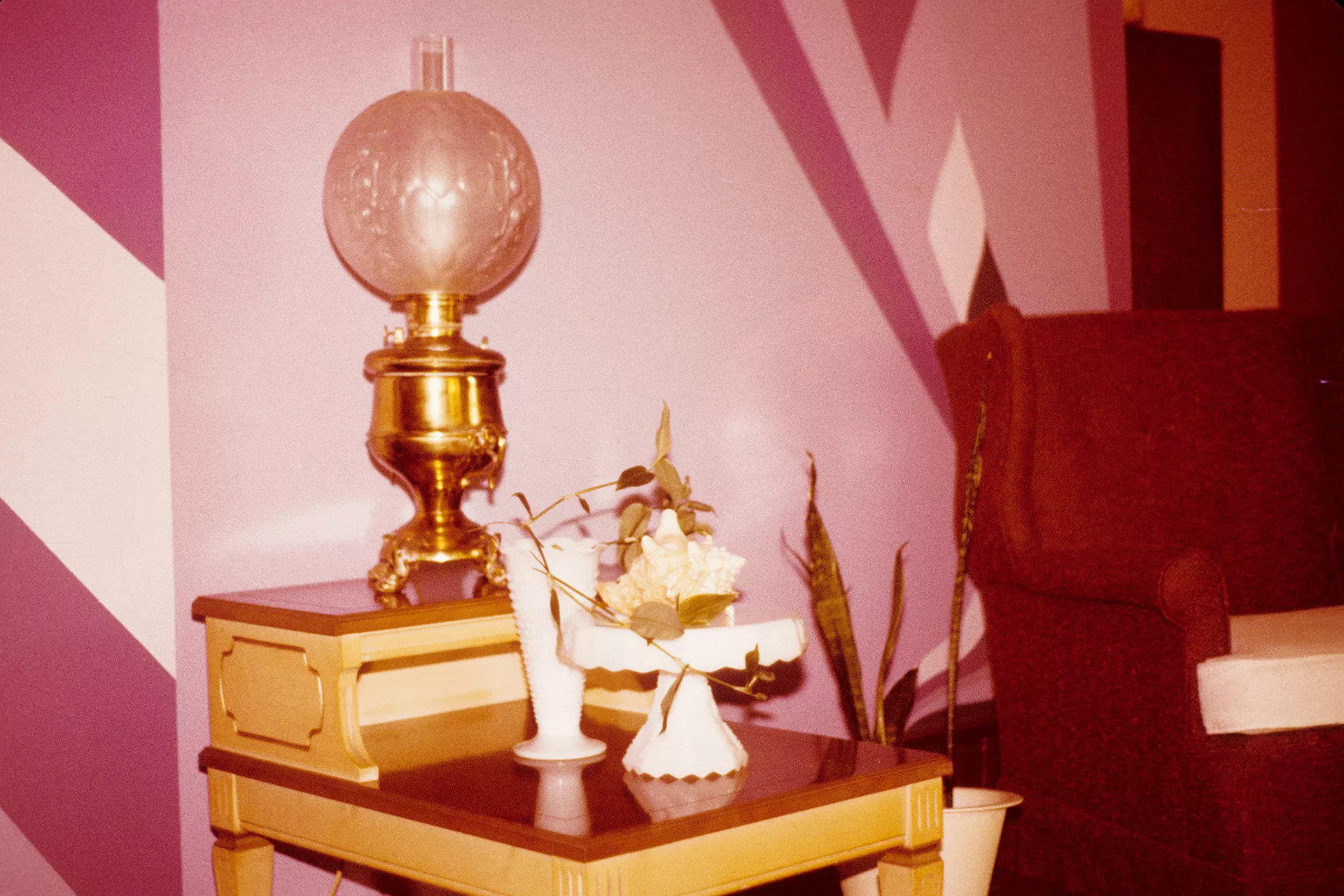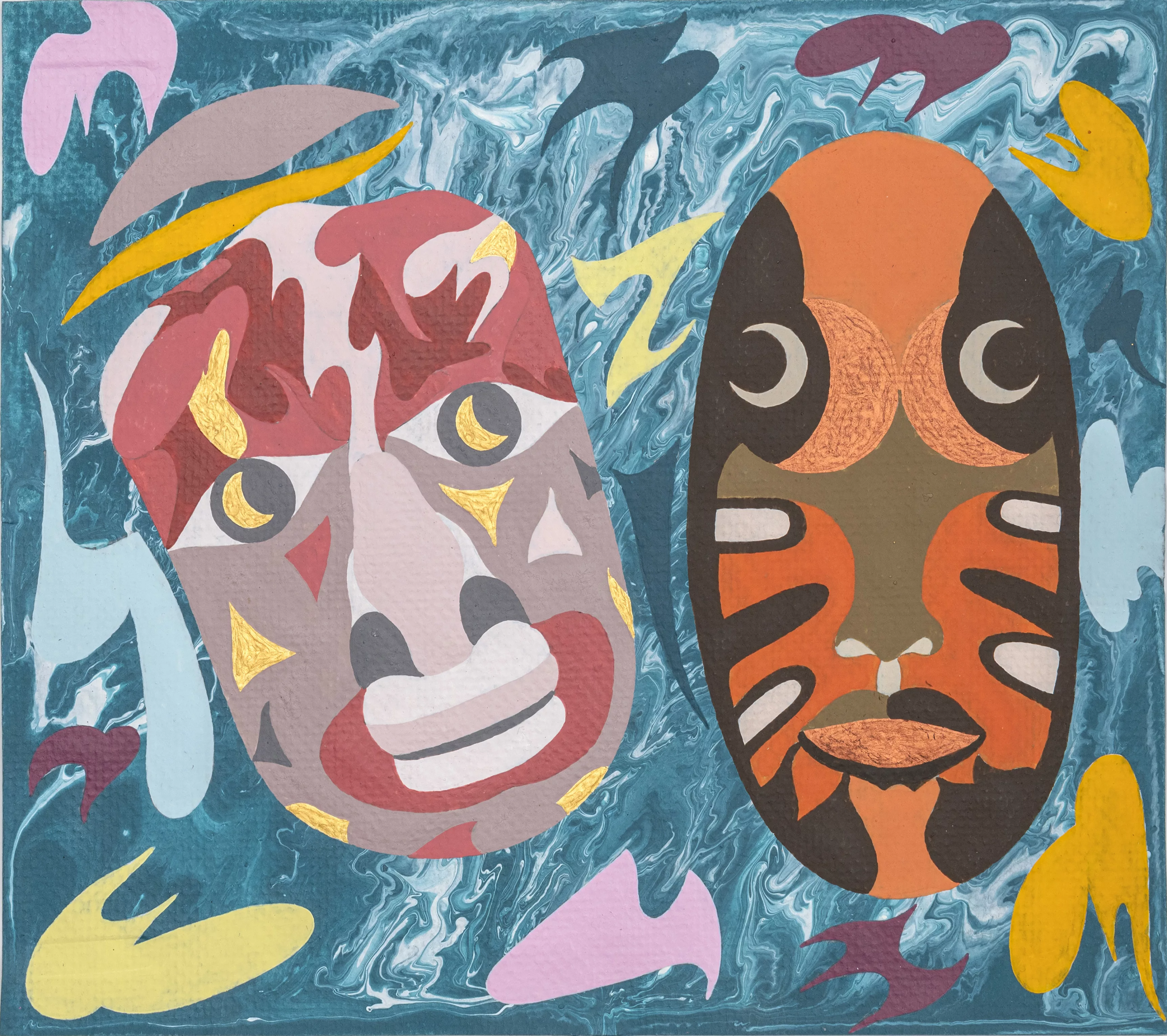New York – The walls are whispering in divine tongue at MARCH Gallery in the East Village. In the sun-lit space, a mesmerizing fusion of ancient motifs and abstracted forms transports me into the celestial realms of Ayé Aton’s visionary paintings and murals. Atonement in Balance, curated with meticulous care, unveils the artistic odyssey of the late percussionist of Sun Ra’s Arkestra, whose practice was a testament to the enduring power of symbology, sound, and cosmic curiosity.
Born Robert Underwood, Ayé Aton was a man seeking meaning. His chosen surname, Aton, meaning disc, refers to anything flat and circular by Egyptians of the Old Kingdom. The moon was a silver aton and the sun was often referred to as the “disc of the day,” the place where Ra, god of the sun (father of all Egyptian gods), was thought to reside. Aton’s chosen name steps to the mystique of Ancient Egypt and its unique vernacular but also to his mentor, the polymath maestro, Sun Ra.
In the 1960’s, as a 20-something, Underwood moved to Chicago and began spending time with an intellectual group made up of older gentlemen who played checkers in Washington Park in Chicago’s South Side. In 2013, historian John Corbett collaborated with artist Glenn Ligon on a book entitled, Sun Ra + Ayé Aton: Space, Interiors, and Exteriors, in which Corbett recalls: “He was by all accounts, an inquisitive young man, asking deep questions about all manners of obscure topics. Several members of the study group told him about their go-to guy for such queries: a fellow they knew as Sunny Ray, who had recently left town but was best equipped to help him on his quest for knowledge. Obtaining Ra’s number, he phoned New York. Ra was immediately receptive, and for the next eleven years, Underwood and Ra spoke almost daily. Their conversations amounted to an informal mentorship: Ra gave him instructions, guided him, and discussed his research with the budding visual artist.”
Following their intellectual and philosophical conversations, Underwood changed his name to Ayé Aton and began painting murals across building facades and interiors of Chicago’s South Side residents. Guided by the aesthetics of Sun Ra’s Egyptian motifs and celestial abstractions, these themes would prove to occupy his consciousness for the rest of his life.

From humble beginnings in Kentucky to iconic pop-psychedelic panoramas to influential Afrofuturism soundscapes — Ayé Aton’s journey ended on a canvas, adorned with Adinkra symbols and imbued with the essence of West African and Egyptian influences. His paintings serve as portals to realms where macrocosm converges with microcosm. Each stroke of his brush, each placed symbol, speaks of a profound dialogue between the cosmic expanse and the intricacies of human history and ideology.
Central to Aton’s visual lexicon are the timeless emblems of Egyptian mythology — the Ankh, the Eye of Horus — interwoven with abstract forms that speak a language of their own. Through his artistry, Aton bridges the gap between the celestial and the terrestrial, inviting viewers to contemplate the interconnectedness of the universe and a saturated human experience.
One shouldn’t overlook the palpable influence of 1970s-80s activism on Aton’s work, a period marked by quests for Black nationalism and African liberation. In pieces like, Inspiration Afrika #18, the deliberate use of the “k” in “Afrika” serves as a poignant nod to the Pan-Afrikan Nationalism that permeated the era, as outlined by luminaries like Amiri Baraka A.K.A. Leroi Jones. In his biography, he explains that the letter “c” did not exist in African languages.
Glenn Ligon writes in his collaborative book with John Corbett, “[Aton’s] murals, with their images of blazing suns, pyramids, comets and planetary bodies painted on the walls of black homes all over [Chicago’s] South Side, were about a future that he, by way of Sun Ra, was reaching his hand out to take them to. Commissioned from the early 1960s through the beginning of the 1970s, the murals were backdrop to house parties, birthdays, heated arguments, fucking, heartache and life. They were the album sleeve art for Afrocentric and Afrofuturist philosophies that helped a generation reimagine itself.”
The exhibit, currently on view at MARCH, not only showcases Aton’s work on canvas but pays homage to his monumental murals adorning the streets of Chicago. These urban tapestries, pulsating with life, serve as testaments to Aton’s unwavering commitment to infusing public spaces with the vibrancy of his artistic vision. And surely, beyond the exteriors of Chicago you can find Aton-coded interiors, beloved and matured.

To complement the exhibition, the Roxy Cinema’s screening of Sun Ra’s, Space is the Place, offers a cinematic voyage through the outer reaches of the cosmos — a thematic resonance with Aton’s exploration of the cosmic and the earthly. Embracing Afrofuturism and the impact of African diasporic communities, the symbiotic relationship between his paintings and the film underscores a shared ethos of transcending boundaries and embracing the infinite possibilities of human creativity.
Atonement in Balance is a reawakening, a celebration of Ayé Aton’s enduring legacy — a testament to his ability to channel the celestial into the tangible. Aton’s wonder has the power to ignite within viewers a renewed sense of awe at the vast mysteries of the universe and intersections of auditory and visual pleasure. He beckons us to embark on a journey of introspection and enlightenment — a journey that transcends time and space itself. If the walls of Ayé Aton’s murals could talk, they would sing.
Written by Gwyneth Giller




